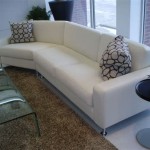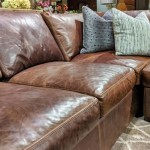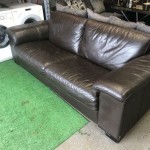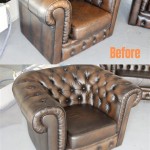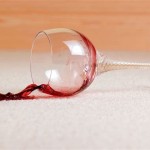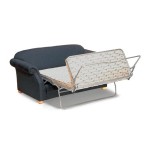Understanding the Standard Double Sofa Bed Size
The standard double sofa bed offers a compelling solution for individuals seeking to maximize space without compromising on sleeping accommodations. This furniture piece serves a dual purpose, functioning as a comfortable seating option by day and transforming into a double bed for overnight guests. Understanding the dimensions and variations within the "standard double" category is crucial for making an informed purchase that suits individual needs and room constraints.
This article delves into the nuances of standard double sofa bed sizing, exploring the typical dimensions, factors influencing those dimensions, and key considerations for incorporating one into a living space. We will examine the bed's dimensions in both sofa and bed configurations, the importance of accurate measurement, and the impact of frame style and mattress type on overall size. This information will empower consumers to select a double sofa bed that seamlessly integrates into their homes, providing both seating comfort and a practical sleeping solution.
Typical Dimensions of a Standard Double Sofa Bed
The term "standard double" generally refers to a sofa bed that converts into a double bed, which in the UK typically has dimensions of 4ft 6 inches wide by 6ft 3 inches long (approximately 135cm x 190cm). This is the size one should expect when the sofa bed is fully extended into its bed configuration. However, the sofa dimensions – the width, depth, and height – vary significantly depending on the style and design of the sofa. These fluctuations can influence the overall footprint of the sofa bed within a room, even when it is not in use as a bed.
In sofa configuration, a standard double sofa bed typically ranges from 170cm to 220cm in width. The depth, measured from the front of the sofa to the back, usually falls between 85cm and 100cm. Height, measured from the floor to the top of the sofa back, is generally between 75cm and 95cm. These figures are approximate, and variations exist depending on the specific model and manufacturer.
The dimensions of the mattress itself also contribute to the overall size perception of the sofa bed. Mattress thickness can vary significantly, ranging from thinner, more compact options around 10cm to thicker, more luxurious choices exceeding 15cm. A thicker mattress may provide enhanced comfort but can also increase the overall profile of the sofa bed when folded away, potentially affecting the seat height and overall appearance.
When assessing the size of a sofa bed, it is crucial to consider the "footprint" when the bed is open. This includes not only the length and width of the mattress but also any additional space required for the unfolding mechanism or any overhang from the sofa frame. Failure to account for this extended area can result in the sofa bed being unsuitable for the intended space, hindering its functionality and comfort.
It's important to note that the internal mechanism for converting the sofa into a bed will also influence the overall dimensions. Some mechanisms are more compact than others, allowing for a smaller sofa frame while still accommodating a standard double mattress. Others might require a more substantial frame, which increases the overall footprint of the sofa.
European double beds might have slightly different dimensions. While technically double, they may be a few centimeters wider or longer than the standard UK double, which could impact the fit of sheets and blankets if using UK standard bedding. Always confirm the mattress size specifically before purchasing bedding.
Factors Influencing Sofa Bed Dimensions
Several factors contribute to the variability in dimensions observed among standard double sofa beds. These factors primarily relate to design choices, construction materials, and the specific type of mechanism used to facilitate the sofa-to-bed transformation. Understanding these influences is essential for selecting a sofa bed that aligns with both space constraints and comfort preferences.
Frame Design: The design of the sofa frame significantly impacts its overall dimensions. Sofa beds with sleek, modern designs often feature more compact frames, which can translate to a smaller overall footprint. Conversely, more traditional or ornate designs may incorporate bulkier frames, leading to increased width, depth, and height. The style of the arms (or lack thereof) is another crucial element. Slim arms or armless designs save significant width compared to rolled or padded arms.
Mechanism Type: The type of mechanism used to convert the sofa into a bed plays a significant role in determining the sofa's dimensions. Pull-out mechanisms, where the bed is pulled out from beneath the sofa cushions, may require less internal space than fold-out mechanisms, where the mattress is folded within the sofa frame. The complexity of the mechanism can also impact the depth of the sofa, as more intricate designs may necessitate a deeper frame to accommodate the folding components.
Mattress Type: The mattress type also contributes to the overall dimensions, particularly when the sofa bed is in its sofa configuration. Thicker mattresses, such as those made from memory foam or innerspring coils, may require more space within the sofa frame when folded, potentially increasing the seat height and overall depth. Conversely, thinner mattresses, often made from foam or a combination of foam and springs, allow for a more compact sofa design.
Arm Style: The style and size of the arms can significantly impact the overall width of the sofa bed. Overstuffed or wide arms can add several inches to the width, while minimalist or armless designs can help to conserve space. Consider the visual impact of the arm style as well; bulky arms contribute to a more substantial appearance, while slim arms offer a sleeker aesthetic.
Leg Height and Style: The height and style of the legs also play a minor role in the overall dimensions and appearance. Taller legs can increase the overall height of the sofa, while shorter legs create a lower profile. The leg style can also influence the visual weight of the sofa; exposed wooden legs tend to look lighter than concealed or upholstered legs.
Material Choices: The materials used in constructing the sofa bed can also affect its dimensions, albeit indirectly. Heavier materials such as solid wood may require thicker frames for support, potentially increasing the overall size. Lighter materials, such as engineered wood or metal, can allow for thinner frames and a more compact design.
Key Considerations for Integrating a Double Sofa Bed into Your Space
Before purchasing a standard double sofa bed, several key considerations should be addressed to ensure a seamless integration into the intended living space. These considerations encompass accurate measurement, understanding room flow, anticipating usage patterns, and selecting a style that complements the existing décor. Careful planning and attention to detail can prevent disappointment and maximize the functionality of the sofa bed.
Accurate Measurement: Precise measurement of the available space is paramount. Measure not only the floor area where the sofa bed will reside in its sofa configuration but also the additional space required when the bed is fully extended. Consider any potential obstructions, such as doorways, windows, or existing furniture, that may impede the opening and closing of the sofa bed. Use masking tape to mark out the dimensions of both the sofa and bed configurations on the floor. This provides a visual representation of the space the sofa bed will occupy and helps to identify any potential issues.
Room Flow and Functionality: Consider the overall flow of the room and how the sofa bed will impact the movement of people within the space. Ensure that there is sufficient clearance around the sofa bed to allow for comfortable passage, even when the bed is open. Think about the primary function of the room and how the sofa bed will contribute to or detract from that function. For example, in a living room, the sofa bed should provide comfortable seating for everyday use and transform easily into a bed when needed. In a guest room, the sofa bed may be used less frequently as a sofa but should prioritize sleeping comfort when used as a bed.
Usage Patterns: Anticipate how frequently the sofa bed will be used as a bed. If it will be used regularly, prioritize a higher-quality mattress and a more robust mechanism that can withstand frequent use. If it will be used only occasionally for guests, a more basic model may suffice. Consider the type of guests who will be using the sofa bed and their individual needs. Older guests may require a thicker mattress and a higher seat height for ease of access.
Style and Aesthetics: Choose a sofa bed that complements the existing décor of the room. Consider the color, fabric, and overall style of the sofa bed and how it will blend with the other furniture and accessories in the space. A well-chosen sofa bed can enhance the aesthetic appeal of the room, while a poorly chosen one can disrupt the visual harmony. Consider the existing color palette and select a sofa bed in a complementary color or a neutral tone that will blend seamlessly with the surrounding décor. Pay attention to the details, such as the leg style, button tufting, and piping, to ensure that the sofa bed aligns with the overall style of the room.
Mechanism Quality and Ease of Use: Evaluate the quality and ease of use of the sofa bed mechanism. Ensure that the mechanism operates smoothly and effortlessly, without requiring excessive force or exertion. Test the mechanism several times before purchasing the sofa bed to ensure that it is reliable and durable. Look for mechanisms that are made from high-quality materials and that are designed to withstand frequent use. Consider the weight of the mattress and frame, as heavier models may be more difficult to maneuver.
Mattress Comfort and Support: Prioritize mattress comfort and support, especially if the sofa bed will be used frequently as a bed. Consider the type of mattress, such as memory foam, innerspring coils, or a combination of both, and choose one that provides adequate support and pressure relief. Test the mattress by lying on it for several minutes to assess its comfort level. Look for mattresses that are CertiPUR-US certified, which indicates that they have been tested for harmful chemicals and emissions.
Fabric Durability and Cleanability: Select a fabric that is both durable and easy to clean. Consider the lifestyle and habits of the people who will be using the sofa bed. If there are children or pets in the home, choose a fabric that is stain-resistant and easy to wipe clean. Look for fabrics that are tightly woven and resistant to wear and tear. Consider the color and pattern of the fabric and how it will conceal stains and dirt. Leather or synthetic leather offers excellent durability and cleanability, while microfiber fabrics are soft and comfortable.

2 Seat Sofas Guide Nabru

Ula Double Sofa Bed Large Beds Nabru

Uberlyfe Premium Jute Lightweight Sofa 3 Seater Double Foam Fold Out Cum Bed In Buy

An Easy Sofa Bed Guide Next

Sofa Bed Mattress Replacements The Ultimate Guide 2024

Foshan Factory Whole Furniture Function Sofa Cum Bed Modern Living Room Lazy Double Folding China Beds Made In Com

The Best Sofa Beds For Sitting And Sleeping

The Best Sofa Beds For Sitting And Sleeping

Logan Small Double Fold Out Sofa Bed M S

Uratex Comfort And Joy Sofa Bed Es

